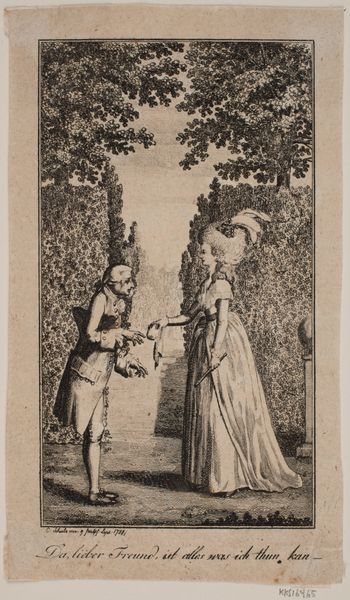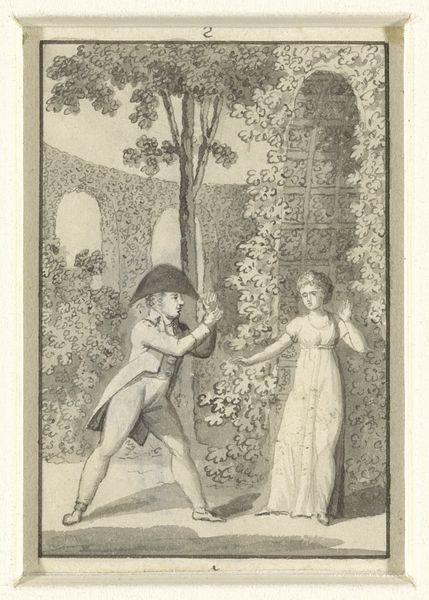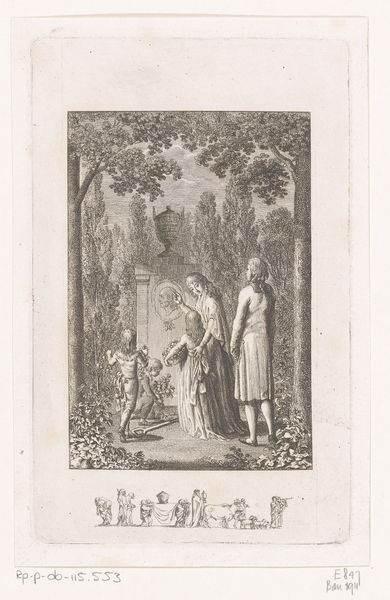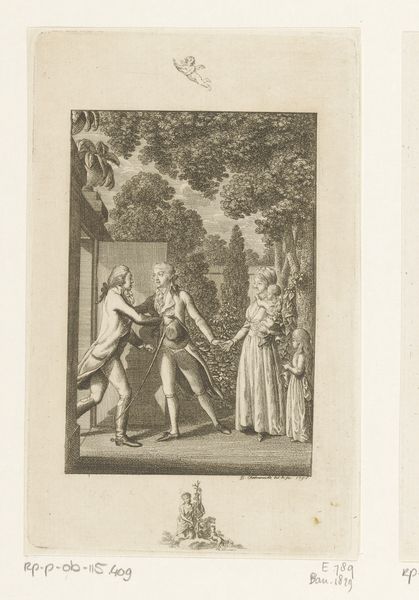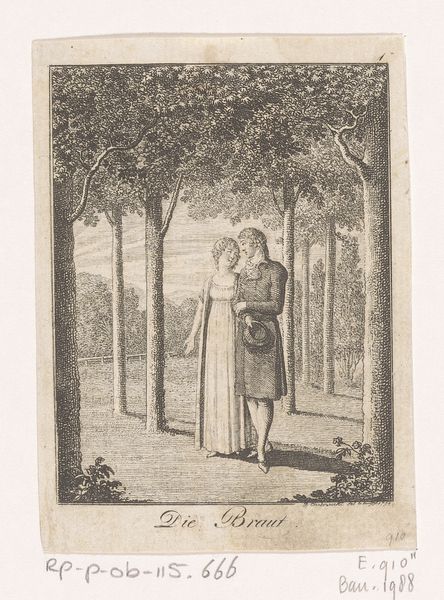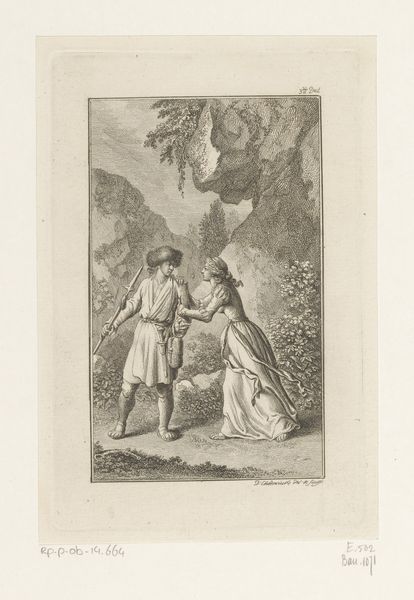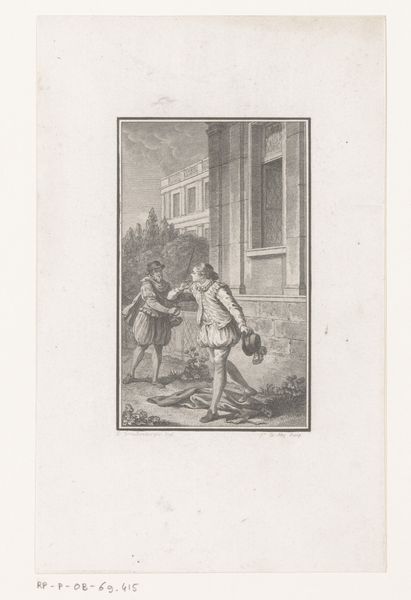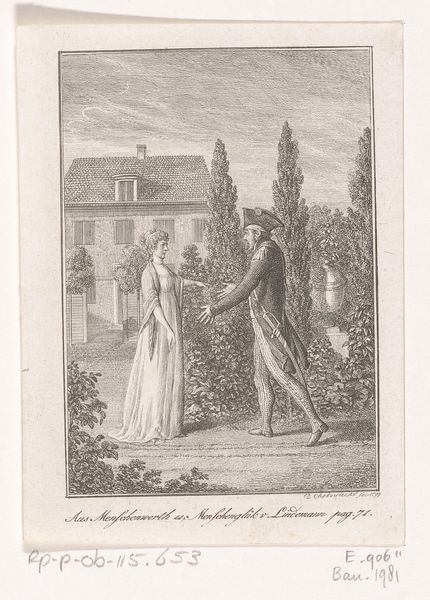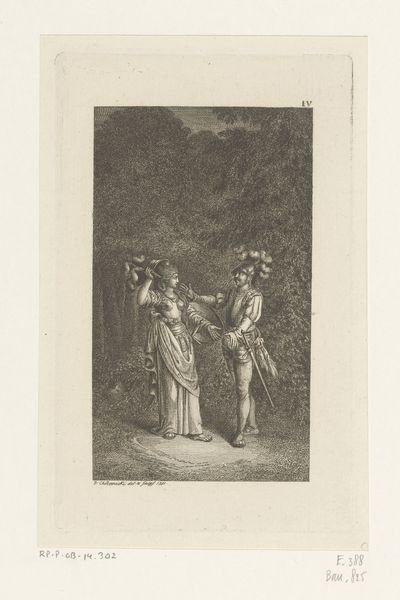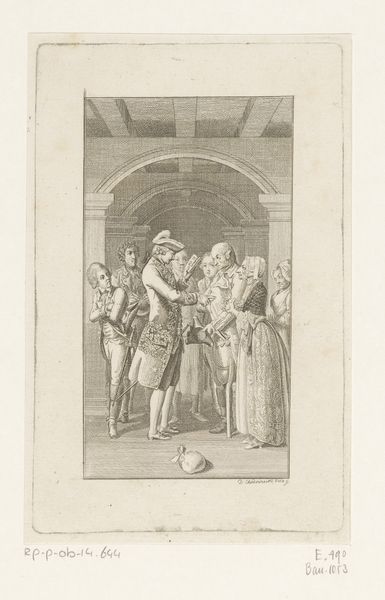
Spion verkleed als wijnboer op het landgoed van Coligny 1798
0:00
0:00
etching, engraving
#
narrative-art
#
etching
#
landscape
#
romanticism
#
cityscape
#
genre-painting
#
engraving
Dimensions: height 85 mm, width 52 mm
Copyright: Rijks Museum: Open Domain
Editor: This etching, "Spion verkleed als wijnboer op het landgoed van Coligny" made in 1798 by Daniel Nikolaus Chodowiecki, presents a narrative scene, and it seems to be quite detailed given the medium. I find the composition a bit unusual; it’s almost staged. What catches your eye? Curator: The etching process itself is fascinating. Consider the labor involved in creating this image through controlled acid erosion of a metal plate, multiple steps just to reproduce a single image. The work isn’t just the "art," but all of that combined! Editor: Right, I hadn't considered all that goes into creating the plate and prints! Does the social context inform how we see it? Curator: Absolutely! In 1798, printed images like this one were not luxury objects, and this was a product made available through manufacturing for popular consumption. What's intriguing is how the subject, a spy in disguise, is placed within the material reality of its production and circulation. We're not simply looking at a picturesque landscape; we're observing a commentary on power, deception, and how the art market consumes social realities, even those tinged with espionage. Do you notice how class dynamics might be embedded? Editor: Well, the spy is doing manual labor as part of his disguise; he is literally "immersed" in labor in his process of concealing his work as an intelligencer. That contrasts, say, the landowners. Thank you—I never would've noticed that on my own! Curator: Considering the print medium shifts our perspective from admiring the technique as a standalone to understanding its position within a broader network of manufacturing and dissemination during that era. Editor: This has broadened my understanding beyond the aesthetic elements. Thinking about production makes all the difference.
Comments
No comments
Be the first to comment and join the conversation on the ultimate creative platform.
